#U.S. Environmental Protection Agency
Explore tagged Tumblr posts
Text

Prescription drugs accumulate in a box at the Back Cove Trail parking lot in Portland, Maine, during a take-back event. Photograph By Ben McCanna, Portland Portland Press Herald/Getty Images
How You Should Dispose of Unused or Expired Medications
Flushing or throwing away leftover drugs can contaminate waterways, threatening people and wildlife. Here are some safer solutions.
— By Priyanka Runwal | Published July 22, 2022 | Sunday August 6, 2023
If you have a stash of unwanted, unused, or expired medicines in a cabinet or drawer somewhere in your home and you don’t know the best way to get rid of them, you’re not alone.
A 2021 survey conducted on behalf of Covanta, a New Jersey-based waste management company, found that 53 percent of the 2,000 Americans polled had no idea what to do with their old medications. Pill hoarding is a common outcome, and many people eventually toss these drugs into household trash or flush them down the toilet or sink—none of which may be a good idea.
Unused or expired medicines lying around at home can get into the wrong hands, leading to accidental poisoning or drug overdose. One study found that between 2000 and 2015, U.S. Poison Control Centers received roughly 32 calls a day about children accidently ingesting opioids that had either been stored or disposed of incorrectly.
When drugs are flushed or sent to landfill, the pharmaceuticals can contaminate our groundwater, lakes, rivers, and streams, threatening human and aquatic life, although our urine and feces that contain remnants of consumed medication are bigger sources of pollution. Wastewater treatment plants aren’t designed to remove these pharmaceuticals, Tim Carroll, a spokesperson for the U.S. Environmental Protection Agency, says in an email. “EPA’s first message to everyone is do NOT put leftover, unused drugs down the drain.”
So how does one dispose of unneeded over-the-counter and prescription medications accumulating in our homes? There are a few options.
Drug Take-back Programs
In an effort to find a solution to drugs languishing in medicine cabinets or lurking in waterways, the U.S. Drug Enforcement Administration launched its first National Take-Back Day in September 2010. More than 4,000 sites across 50 states collected nearly 250,000 pounds of pharmaceuticals that people returned. Since then, DEA has hosted this single-day event biannually; in April this year, more than 5,000 sites collected about 721,000 pounds of pharmaceuticals.
People can also use mail-back envelopes or drop off their unwanted medications year-round at DEA-registered collection kiosks in police stations, pharmacies, community health centers, and hospitals. These returned drugs are then sent to medical waste incinerators.
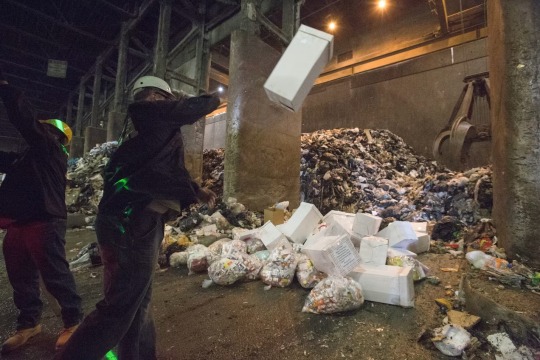
Drug Enforcement Administration agents and Soldiers from the New Jersey National Guard's Counter Drug Task Force dumped prescription drugs to be incinerated at the Covanta Essex Resource Recovery Facility during Operation Take Back New Jersey in Newark, N.J., Oct. 31, 2017. Operation Take Back New Jersey is a DEA program that provides a safe and legal method for the citizens of New Jersey to dispose their unwanted, unused, and expired medicines. The New Jersey National Guard assisted with the collection and disposal of the medications. (U.S. Air National Guard photo by Master Sgt. Matt Hecht) Photograph By Master Sgt. Matt Hecht, AB Forces News Collection/Alamy Stock Photo
In 2021 Stericycle, the largest medical waste incinerator company in the U.S., burned 40 million pounds of unused and expired pharmaceuticals, says Jim Anderson, the company’s vice president for product management and innovation. Incineration produces an inert ash that’s sent to landfills. However, one downside of this disposal method is that transporting and burning such waste and its packaging can release greenhouse gas emissions that can be potentially greater than those generated if the drugs were dumped in landfill, according to one study estimate.
But take-back programs are preferred as they reduce the risk of drug misuse and the incineration “effectively eliminates the entrance of these pharmaceuticals into our nation’s waters,” Carroll says.
However, Steve Skerlos, a mechanical, civil, and environmental engineer at the University of Michigan argues that take-back programs could still result in medicines piling up in homes—a problem such programs were designed to address in the first place. “The question is, if I have extra, unused medication, am I going to leave my house in the next day, or week, even a month, to return that,” he says, especially in rural settings where take-back sites may not be as easily accessible. “A reasonable person may consider landfill to get it out of the house fast.”
In such cases, the DEA suggests mixing medicinal tablets and capsules with undesirable substances like coffee grounds or kitty litter and tossing the mixture into the trash inside a sealed bag or container. (Don’t crush the drugs though.)
And while the EPA advises against flushing pharmaceuticals down the drain, the U.S. Food and Drug Administration maintains a list of limited medications that have the potential to be misused or result in death if taken inappropriately and so can be flushed when safer disposal alternatives are lacking.
Pharmacies also sell drug destroyers such as DisposeRx that can work with pills, tablets, capsules, liquids, and powders. “It’s about the size of a packet of sugar,” says Thomas Menighan, former CEO of the American Pharmacists Association. “You open it, put it in a bottle of unused opioids, or any medicine, for example, you pour a little water in and shake it up, it turns into a white slurry,” which can then be tossed into the trash.
But it’s unclear if these products permanently bind or inactivate the medicinal compounds so that they don’t end up in the landfill liquid, which is released into wastewater treatment plants, and can eventually contaminate our waterways.
Recycling Pharmaceuticals
Perhaps surprisingly, not all unused medications need to be thrown away.
Every year five billion dollars’ worth of unexpired medicine ends up being discarded in the U.S. That could happen because a patient dies, their condition improves and they no longer need their prescribed medication, there’s a dose change, or they experience side effects and are put on new drugs. In such cases these unexpired medications—worth an estimated $700 million—can be recycled.
“We’re wasting a lot of medication which is already paid for,” says Anandi Law, a patient engagement specialist at the Western University of Health Sciences in California. “We could have somebody else who needs it have it.”
Millions of U.S. adults skip or delay getting their prescriptions filled due to high costs. Hence, at least 40 states have passed legislation to establish medication repository programs that allow pharmacies, drug manufactures, medical and long-term care facilities, and sometimes individuals to donate their unused drugs in original sealed containers or tamper-evident packaging.
A licensed pharmacist then inspects the donated medication to check the expiry date and look for signs of tampering, misbranding, or any indication that the drug could be compromised. Once approved, the drugs can be dispensed to uninsured or underinsured individuals via state-approved pharmacies, hospitals, charitable clinics, or community health centers.
Since its inception in 2007, Iowa’s drug donation program, SafeNetRx, has served more than 117,000 patients and redistributed nearly $54-million worth of medication and supplies. Georgia’s program formally launched in 2018, and it has already filled prescriptions worth over $50 million.
“Even though over 40 states have these drug donation laws, a lot of people don’t know that they exist,” says Kiah Williams, co-founder of SIRUM, a nonprofit organization that works with pharmacies and health facilities across the country to assist with drug donation.
Donating unused medications or using take-back programs are voluntary for households, but experts hope more people will use these options instead of disposing of their leftover drugs in the trash or down the drain, which tends to be more convenient.
“All of these efforts are still relatively new,” Carroll says. “We expect we have a long way to go until households change their habits.”
#Science#Prescription Drugs#Expired Medications#Disposing Off#Flushing | Throwing#Leftover Drugs#Contaminations of Waterways#Threat to Wildlife#Covanta | New Jersey#Pill Hoarding#Household Trash | Flush#U.S. Poison Control Centers#Wastewater Treatment Plants | Pharmaceuticals#Tim Carroll#U.S. Environmental Protection Agency#EPA#National Take-Back Day#Steve Skerlos: Mechanical Civil and Environmental Engineer#University of Michigan#U.S. Food and Drug Administration#DisposeRx#Thomas Menighan#American Pharmacists Association#Recycling Pharmaceuticals#Anandi Law#California | Western University of Health Sciences#Iowa | SafeNetRx#Kiah Williams | SIRUM#The National Geographic
0 notes
Text
Senate votes to overturn EPA rule that limits 7 hazardous air pollutants
The Senate on Thursday approved an effort to overturn an Environmental Protection Agency rule tied to the Clean Air Act and designed to limit seven of the most hazardous air pollutants that are emitted by heavy industry.
The 52-46 party-line vote marked the first time in the 55-year history of the Clean Air Act that Congress has moved to weaken the power of the landmark environmental law.
190 notes
·
View notes
Text

Earth Day History
Earth Day, first observed on 22 April 1970, is considered the beginning of the modern environmental movement.
As a response to increasing environmental concerns, like the oil spill in Santa Barbara in 1969, U.S. Senator Gaylord Nelson founded Earth Day to raise awareness about how to protect the environment.
Nelson and activist Denis Hayes organized teach-ins on college campuses that included various groups and organizations, drawing inspiration from protest teach-ins of the era.
With this massive mobilization, the U.S. developed key environmental laws and the Environmental Protection Agency (EPA) was created.

Earth Day 2024 Theme
The theme of Earth Day 2024 is “Planet vs. Plastics.”
This is about fighting the big problem of plastic all over the world. Earth Day organization wants to bring people from different places together.
The goal is to make much less plastic, 60% less by 2040.
We want a future without so much plastic. This is not just about having less trash, but it is also about keeping us and the environment healthy.
#Earth Day#Earth Day 2024#environmental movement#environmental concerns#U.S. Senator Gaylord Nelson#Denis Hayes#Environmental Protection Agency (EPA)#Planet vs. Plastics#environmental laws#environment#save mother earth
119 notes
·
View notes
Video
"No Gas" Signs Were a Common Sight in Oregon During the Fall of 1973, Such as at This Station in Lincoln City Along the Coast. Many Stations Closed Earlier, Opened Later and Shut Down on the Weekends 10/1973 by U.S. National Archives Via Flickr: Original Caption: "No Gas" Signs Were a Common Sight in Oregon During the Fall of 1973, Such as at This Station in Lincoln City Along the Coast. Many Stations Closed Earlier, Opened Later and Shut Down on the Weekends 10/1973 U.S. National Archives’ Local Identifier: 412-DA-12964 Photographer: Falconer, David Subjects: Lincoln City (Lincoln county, Oregon, United States) inhabited place Environmental Protection Agency Project DOCUMERICA Persistent URL: arcweb.archives.gov/arc/action/ExternalIdSearch?id=555416 Repository: Still Picture Records Section, Special Media Archives Services Division (NWCS-S), National Archives at College Park, 8601 Adelphi Road, College Park, MD, 20740-6001. For information about ordering reproductions of photographs held by the Still Picture Unit, visit: www.archives.gov/research/order/still-pictures.html Reproductions may be ordered via an independent vendor. NARA maintains a list of vendors at www.archives.gov/research/order/vendors-photos-maps-dc.html Access Restrictions: Unrestricted Use Restrictions: Unrestricted
#U.S. National Archives#Environmental Protection Agency#DOCUMERICA#nara:arcid=555416#Gas#Gasoline#Shortage#Gas Shortage#Station#Pump#Gas Station#Sign#flickr
0 notes
Video
Detail of Havoc Caused by Flooding of Guadalupe River by U.S. National Archives Via Flickr: Original Caption: Detail of Havoc Caused by Flooding of Guadalupe River U.S. National Archives’ Local Identifier: 412-DA-1979 Photographer: Reaves, Bill, 1934- Subjects: New Braunfels (Comal county, Texas, United States) inhabited place Environmental Protection Agency Project DOCUMERICA Persistent URL: catalog.archives.gov/id/544472 Repository: Still Picture Records Section, Special Media Archives Services Division (NWCS-S), National Archives at College Park, 8601 Adelphi Road, College Park, MD, 20740-6001. For information about ordering reproductions of photographs held by the Still Picture Unit, visit: www.archives.gov/research/order/still-pictures.html Reproductions may be ordered via an independent vendor. NARA maintains a list of vendors at www.archives.gov/research/order/vendors-photos-maps-dc.html Access Restrictions: Unrestricted Use Restrictions: Unrestricted
0 notes
Text
Grrrrrrrrrrrrrrrrr Snippets
For some reason that I cannot possibly imagine (sarcasm intended), my mood is on the upper end of the grumpy scale today, so I decided to vent a bit in the form of some very short snippets of snark! The New York Times headline reads: “The justices paused an E.P.A. plan to curtail air pollution, dealing a blow to President Biden.” No, the justices dealt a blow to every living creature, present…

View On WordPress
#&039;gratuities&039; vs &039;bribes&039;#Alejandro Mayorkas#Environmental Protection Agency (EPA)#U.S. Supreme Court corruption
0 notes
Text
"Oil company Chevron must pay $744.6 million to restore damage it caused to southeast Louisiana’s coastal wetlands, a jury ruled on Friday [April 4, 2025] following a landmark trial more than a decade in the making.
The case was the first of dozens of pending lawsuits to reach trial in Louisiana against the world’s leading oil companies for their role in accelerating land loss along the state’s rapidly disappearing coast. The verdict – which Chevron says it will appeal – could set a precedent leaving other oil and gas firms on the hook for billions of dollars in damages tied to land loss and environmental degradation...
The jury awarded $575 million to compensate for land loss, $161 million to compensate for contamination and $8.6 million for abandoned equipment. The amount earmarked for restoration exceeds $1.1 billion when including interest, according to attorneys for Talbot, Carmouche & Marcello, the firm behind the lawsuit.
Plaquemines Parish, the southeast Louisiana district which brought the lawsuit, had asked for $2.6 billion in damages...
How are oil companies contributing to Louisiana’s land loss?
The lawsuit against Chevron was filed in 2013 by Plaquemines Parish, a rural district in Louisiana straddling the final leg of the Mississippi River heading into the Gulf of Mexico, also referred to as the Gulf of America as declared by President Donald Trump.
Louisiana’s coastal parishes have lost more than 2,000 square miles (5,180 square kilometers) of land over the past century, according to the U.S. Geological Survey, which has also identified oil and gas infrastructure as a significant cause. The state could lose another 3,000 square miles (7,770 square kilometers) in the coming decades, its coastal protection agency has warned...
Thousands of miles of canals cut through the wetlands by oil companies weakens them and exacerbates the impacts of sea level rise. Industrial wastewater from oil production degrades the surrounding soil and vegetation. The torn up wetlands leave South Louisiana ��� home to some of the nation’s biggest ports and key energy sector infrastructure -- more vulnerable to flooding and destruction from extreme weather events like hurricanes...
Attorney Jimmy Faircloth, Jr., who represented the state of Louisiana, which has backed Plaquemines and other local governments in their lawsuits against oil companies, told jurors from the parish that Chevron was telling them their community was not worth preserving.
“Our communities are built on coast, our families raised on coast, our children go to school on coast,” Faircloth said. “The state of Louisiana will not surrender the coast, it’s for the good of the state that the coast be maintained.”
What does this mean for future litigation against oil companies?
Louisiana’s economy has long been heavily dependent on the oil and gas industry and the industry holds significant political power. Even so, Louisiana’s staunchly pro-industry Gov. Jeff Landry has supported the lawsuits, including bringing the state on board during his tenure as Attorney General.
Oil companies have fought tooth and nail to quash the litigation, including unsuccessfully lobbying Louisiana’s Legislature to pass a law to invalidate the claims. Chevron and other firms also repeatedly tried to move the lawsuits into federal court where they believed they would find a more sympathetic audience.
But the heavy price Chevron is set to pay could hasten other firms to seek settlements in the dozens of other lawsuits across Louisiana. Plaquemines alone has 20 other cases pending against oil companies.
The state is running out of money to support its ambitious coastal restoration plans, which have been fueled by soon-expiring settlement funds from the Deepwater Horizon oil spill, and supporters of the litigation say payouts could provide a much-needed injection of funds...
Attorneys for the parish said they hope that big payout will prompt more oil companies to come to the table to negotiate and channel more funding towards coastal restoration.
“Our energy is focused on securing appropriate verdicts and awards for every parish involved in these actions,” Carmouche said in a statement. “If we continue to be successful in our efforts, these parishes, and Louisiana, will have sent a clear message that Louisiana’s future must be built around a new balance between our energy industry and environmental necessities.”"
-via AP News, April 4, 2025
#united states#north america#louisiana#coastal erosion#wetlands#environment#ecosystem#coast#gulf coast#gulf of mexico#oil#fossil fuels#chevron#oil company#good news#hope
2K notes
·
View notes
Text
Things Biden and the Democrats did, this week.
The Consumer Financial Protection Bureau put forward a new regulation to limit bank overdraft fees. The CFPB pointed out that the average overdraft fee is $35 even though majority of overdrafts are under $26 and paid back with-in 3 days. The new regulation will push overdraft fees down to as little as $3 and not more than $14, saving the American public collectively 3.5 billion dollars a year.
The Environmental Protection Agency put forward a regulation to fine oil and gas companies for emitting methane. Methane is the second most abundant greenhouse gas, after CO2 and is responsible for 30% of the rise of global temperatures. This represents the first time the federal government has taxed a greenhouse gas. The EPA believes this rule will help reduce methane emissions by 80%
The Energy Department has awarded $104 million in grants to support clean energy projects at federal buildings, including solar panels at the Pentagon. The federal government is the biggest consumer of energy in the nation. The project is part Biden's goal of reducing the federal government's greenhouse gas emissions by 65% by 2030. The Energy Department estimates it'll save taxpayers $29 million in the first year alone and will have the same impact on emissions as taking over 23,000 gas powered cars off the road.
The Education Department has cancelled 5 billion more dollars of student loan debt. This will effect 74,000 more borrowers, this brings the total number of people who've had their student loan debt forgiven under Biden through different programs to 3.7 Million
U.S. Agency for International Development has launched a program to combat lead exposure in developing countries like South Africa and India. Lead kills 1.6 million people every year, more than malaria and AIDS put together.
Congressional Democrats have reached a deal with their Republican counter parts to revive the expanded the Child Tax Credit. The bill will benefit 16 million children in its first year and is expected to lift 400,000 children out of poverty in its first year. The proposed deal also has a housing provision that could see 200,000 new affordable rental units
11K notes
·
View notes
Text
Sounds like they’re trying to kill us.
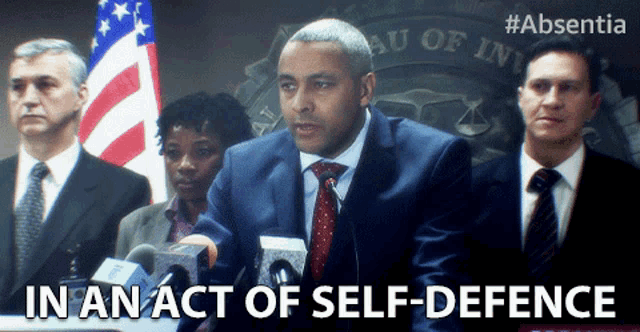

17 notes
·
View notes
Text
In a landmark case, the U.S. Supreme Court has ruled that the so-called Chevron doctrine would be overturned.
It is a 40-year standard that the conservative court eliminated with a 6-2 decision, in which Justice Ketanji Brown Jackson recused herself.
Lower courts have relied on this doctrine over 18,000 times to determine environmental regulations that stopped multinational corporations from polluting. The High Court has deferred to the doctrine 70 times, agreeing that they should defer to a government agency’s reasonable interpretation of an ambiguous statute
The decision seriously limits the power of the executive branch and gives it to the courts.
. . .
Speaking to MSNBC after the ruling, former solicitor general Neal Katyal noted that it's a little-known case to everyday Americans, but “this is going to change government as we know it."
"It is impossible to overstate how damaging to governance--and to protections for air, water, food and drug safety, worker rights & so much more--the SCOTUS' overturning of (Justice Antonin Scalia's) Chevron Doctrine is.
2K notes
·
View notes
Text
The Best News of Last Week
1. Arizona governor Ok's over the counter birth control
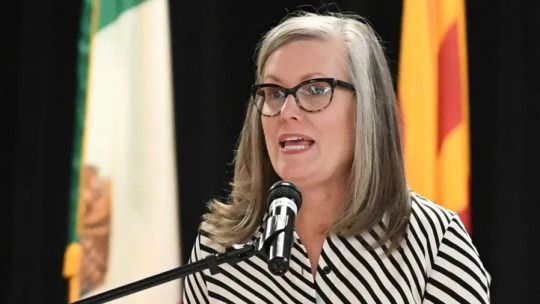
Arizona Gov. Katie Hobbs (D) has expanded access to over-the-counter birth control that will “soon be available to Arizonans,” according to a press release.
Arizonans 18 and older will soon be able to go to their local pharmacy and purchase oral contraceptives without a doctor’s prescription.
2. ‘Great news’: EU hails discovery of massive phosphate rock deposit in Norway
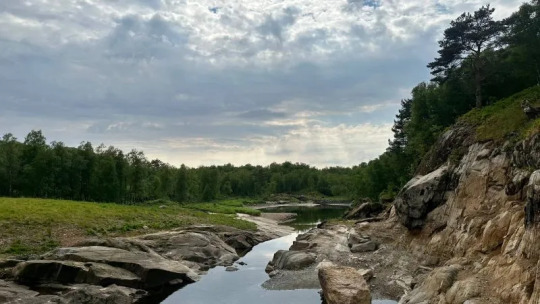
A massive underground deposit of high-grade phosphate rock in Norway, pitched as the world’s largest, is big enough to satisfy world demand for fertilisers, solar panels and electric car batteries over the next 50 years, according to the company exploiting the resource. About 90% of the world’s mined phosphate rock is used in agriculture for the production of phosphorous for the fertiliser industry, for which there is currently no substitute.
3. U.S. Is Destroying the Last of Its Once-Vast Chemical Weapons Arsenal

Decades behind its initial schedule, the dangerous job of eliminating the world’s only remaining declared stockpile of lethal chemical munitions will be completed as soon as Friday.
4. Chinese scientists create edible food packaging to replace plastic

By incorporating certain soy proteins into the structure, Chinese University of Hong Kong scientists successfully created edible food packaging.
5. World's 1st 'tooth regrowth' medicine moves toward clinical trials in Japan

A Japanese research team is making progress on the development of a groundbreaking medication that may allow people to grow new teeth, with clinical trials set to begin in July 2024. The tooth regrowth medicine is intended for people who lack a full set of adult teeth due to congenital factors.
6. No Longer Endangered: The Bald Eagle is an Icon of the ESA

When the Endangered Species Act (ESA) was enacted in 1973, bald eagle population numbers across the country showed that the species was close to disappearing. Before the ESA, in the 1950s and ‘60s, eagles were shot routinely despite the protection. The ESA listing helped bring public attention to the issue.
Through the early 1970s and into the early ‘80s, numbers increased gradually. Then, as you got into the ‘90s, there was still gradual growth. From the late ‘90s into the 2000s, the population really exploded. There was a doubling rate of every several years or so for a while.
7. Deforestation in Brazil's Amazon drops 34% in first half 2023
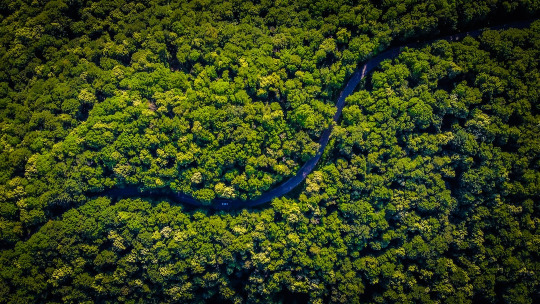
Deforestation in Brazil's Amazon fell 34% in the first half of 2023, preliminary government data showed on Thursday, hitting its lowest level in four years as President Luiz Inacio Lula da Silva institutes tougher environmental policies.
Data produced by Brazil's national space research agency Inpe indicated that 2,649 square km (1,023 square miles) of rainforest were cleared in the region in the half year, the lowest for the period since 2019.
----
That's it for this week :)
This newsletter will always be free. If you liked this post you can support me with a small kofi donation:
Support this newsletter ❤️
Also don’t forget to reblog.
5K notes
·
View notes
Text
History of Earth Day & Arbor Day in Parks

First Annual Earth Day Birthday Parade and Celebration in Union Square on April 22, 1970
Earth Day began in 1970 as a way to raise awareness about environmental issues. Gaylord Nelson, a U.S. Senator from Wisconsin, and Denis Hayes, a young environmentalist, joined to organize events across the country and "shake things up." Following that first Earth Day, which was celebrated by 20 million people across the country, President Richard Nixon created the Environmental Protection Agency.
For the first Earth Day on April 22, 1970, thousands participated in various sanctioned events in New York City. Fifth Avenue was closed to traffic from Union Square Park to Central Park, and 14th Street between 3rd and 7th Avenues was transformed into an "Ecological Carnival."

First Annual Earth Day Birthday Parade and Celebration
Union Square Park served as the focus of numerous Earth Day observances and teach-ins throughout the metropolitan region. Over the day, some 100,000 people were estimated to have thronged to the square in one of the largest demonstrations there since the socialist rallies of the 1930s. The empty streets resulted in at least one picnic spread at the intersection of 57th Street and Fifth Avenue, and Mayor John V. Lindsay repeated the idea during the summer of 1970 when he closed Fifth Avenue to traffic for four successive weekends. The City also banned cars for the day in Central Park in Manhattan, Brooklyn's Prospect Park, Forest Park in Queens, and Silver Lake Park in Staten Island.

First Annual Earth Day Birthday Parade and Celebration
Earth Day became a global event in 1990; the event has been celebrated in earnest with tours, events, and volunteer opportunities at parks across the city since 2000. For NYC Parks, Earth Day is a chance to honor our green spaces and how we care for them, and to raise awareness about how we are working to shape a greener future for our city.

Youthful zeal and environmental activism join forces as celebrants hoist a tree at Union Square Park on the first Earth Day, April 22, 1970. Photo by Daniel McPartlin; courtesy of Parks Photo Archive.
Arbor Day Observed in the City
Arbor Day, celebrated on the last Friday in April, dates to 1872 when it is said that over one million trees were planted in Nebraska. Julius Sterling Morton, originally from upstate New York then living in Nebraska, was instrumental in establishing the day. New York State has been celebrating Arbor Day since 1888, and Arbor Day has been celebrated at NYC Parks for years. In 1906, Arbor Day festivities were held in playgrounds, "thereby inculcating a true love for nature," according to the 1906 Annual Report.
Planting Trees for New York City

With the support of Big Bird, Mayor Bloomberg helps plant the first tree of the MillionTreesNYC initiative, October 9, 2007. Photo by Daniel Avila.
Inspired by the million trees planted in Nebraska in 1872, NYC Parks and the New York Restoration Project launched MillionTreesNYC in 2007. The goal of the citywide public-private program was to plant and care for one million new trees across the city. In his support for this tree initiative, Mayor Michael Bloomberg pointed out that trees help clean the air and reduce the pollutants that trigger asthma (an endemic problem in underserved areas of the city) while also cooling streets, sidewalks, and homes on hot days, and increasing property values and encouraging neighborhood revitalization. In 2015, thanks to help from NYRP, additional partners, our many volunteers, and nearly 50,000 New Yorkers who helped plant trees in our parks, on neighborhood streets, and in their own backyards, we planted our millionth tree.

Some 20 million people took part in the first Earth Day protests held across the United States on April 22, 1970. In New York City, the streets near Union Square Park were turned into an "ecological carnival" in one of the largest demonstrations the city had seen in decades. Photograph By Santi Vissalli, Getty
In the last 20 years, Parks has worked to diversify New York City’s street tree species to make our urban forest stronger and more resilient. We currently plant over 200 tree species that are well suited to the urban environment because they’re able to withstand soil compaction, drought, flooding, air pollution, high pH soils, and strong winds. More information can be found on our Approved Species List page, the NYC Street Tree Map, and our 2015 Street Tree Census Report.
#History#Earth Day#Arbor Day#New York City (Manhattan)#Fifth Avenue#Central Park#Gaylord Nelson U.S. Senator From Wisconsin#Denis Hayes#President Richard Nixon#Environmental Protection Agency#Union Square Park#Ecological Carnival#Central Park in Manhattan | Brooklyn's Prospect Park | Forest Park in Queens | Silver Lake Park in Staten Island#Mayor John V. Lindsay#Julius Sterling Morton#MillionTreesNYC#New York Restoration Project#NYC Parks#Mayor Bloomberg
1 note
·
View note
Text

WASHINGTON (AP) — In what he called the “most consequential day of deregulation in American history,” the head of the Environmental Protection Agency announced a series of actions Wednesday to roll back landmark environmental regulations, including rules on pollution from coal-fired power plants, climate change and electric vehicles.
“We are driving a dagger through the heart of climate-change religion and ushering in America’s Golden Age,’' EPA Administrator Lee Zeldin said in an essay in The Wall Street Journal.
In all, Zeldin said he is rolling back 31 environmental rules, including a scientific finding that has long been the central basis for U.S. action against climate change.
180 notes
·
View notes
Text
While they contribute little to society, welfare ranchers on public lands demand a lot in the form of subsidies whose scope is a testament to their outsize power and influence. It’s estimated the state and federal largesse to the industry amounts to between $500 million and $1 billion a year, all of it funded generously by the taxpayer. This includes below-market grazing fees for cows and sheep, fence construction, road building and maintenance, cattle guards, forage improvement and seeding programs, poisoning of unwanted vegetation, forest clearing, stream diversions, water projects such as dams, pipelines, aqueducts, stock ponds and troughs, the monitoring of livestock health, and control of predators and other mammalian and avian pests deemed a threat to the industry. The U.S. Department of Agriculture operates a specialized hunting and trapping unit—referred to by the Saboteur as “hired killers”—that slaughters tens of thousands of animals each year to aid public lands stockmen, including coyotes, beavers, and prairie dogs. Ranchers also receive generous federal and state tax write-offs for every cow they graze, along with reduced state property taxes for their private deeded lands. They are additionally “blow-jobbed,” as the Saboteur put it, by the very agencies that are supposed to be preventing their overstocking and overgrazing of public lands. The Forest Service and the Bureau of Land Management are the primary culprits in this charade of regulation, in which it appears the cowboys run the show and the bureaucrats are their puppets. The industry is thus provided all kinds of preferential treatment and survives on the dole because in the arid conditions of the West, where the climate conspires against cattle production, it cannot do otherwise. “Western cattlemen are nothing more than welfare parasites,” wrote author Edward Abbey, the literary father of the eco-sabotage movement in the United States, who also observed that cattlemen “survive by hiding behind the cheap mythology of the ‘Cowboy’: literally, a boy who looks after cows.” Abbey was hardly alone in coming to this conclusion. Conservative pundit George Will opined that an inner-city mother on public assistance was “the soul of self-reliance compared to a westerner who receives federally subsidized range privileges.” The industry, naturally, wants ever more privilege. The primary advocacy group of ranchers who exploit the public domain is the Public Lands Council, which is funded and staffed by the National Cattlemen’s Beef Association, a political and cultural giant in the annals of lobbying. Every few years, the Public Lands Council issues a policy document to outline priorities for Congress and the White House. Katie Fite, an ecologist with the nonprofit Wildlands Defense in Boise, calls it the “Welfare Rancher’s demand letter.” “The Big Hats basically want super-duper extra special status for every welfare ranching permit holder,” she told me in an email, “because if you have herds of cows or sheep you are a Lord.” Among the common demands: the general annihilation of prairie dogs, a keystone species already 98 percent gone throughout the West but which ranchers still consider a pest; the stripping of Endangered Species Act protections for the trifling number of remaining grizzly bears and for “all species of wolves” in the United States; and rollbacks of key provisions of the National Environmental Policy Act, which requires environmental impact assessments of all commercial activities on federal lands, including ranching operations. The Public Lands Council has also sought to amend the Wild Free-Roaming Horses and Burros Act so that wild horses can be killed because they compete for forage with cows. “They want wild horses in the West pretty much GONE,” Fite wrote me. “The Endangered Species Act rendered meaningless/GONE. They want a free hand to grossly pollute water. They attack just about everything good or positive with public lands and the environment.”
1 April 2025
107 notes
·
View notes
Text

Archeologists Discover 2,500-Year-Old Midas Dynasty Tomb in Turkey
A 2,500-year-old royal tomb has been discovered by archeologists at the site of an ancient city in Turkey.
After four months of excavations, Penn Museum and Ankara Hacı Bayram Veli University archeologists discovered a well-preserved royal tomb chamber that dates back to 8th century BCE (800 to 701 BCE). The tomb's roof was collapsed, but objects inside remained intact, including bronze vessels used during banquets, iron rods, a pair of large bronze cauldrons and assorted smaller bronze cauldrons, jugs and bowls, according to a news release.
The tomb was discovered at the archeological site of Gordion, the capital of the Phrygian kingdom, which controlled much of Asia Minor during the first millennium BCE, Gordion Excavation Director C. Brian Rose said in a news release. Gordion is located in northwest Turkey, about 60 miles southwest of Turkey’s capital Ankara.




At one time, Gordion was ruled by King Midas, famously known for his "golden touch." Archeologists believe that the newly-discovered tomb may have belonged to a member of the Midas dynasty.
Archeologists used magnetic prospection technology to find the tomb, a news release states. This geophysical method uses variations in Earth’s magnetic field to identify objects below the surface, according to the U.S. Environmental Protection Agency.
to archeologists’ surprise, the tomb indicated a cremated burial. Up until this latest excavation, researchers believed the first cremation to occur in Gordion was more than 100 years later.
Vessels inside the tomb also featured textiles adhered to their exterior, which indicate that textiles were an important industry in Gordion, Rose said in a news release.
The tomb was located near and appeared like the Midas Mound tomb, which is believed to have housed the body of King Midas’ father.
The Gordion site has proved fruitful for archeologists for 75 years, since Penn Museum began leading excavations there in 1950. Previous excavations included the oldest wooden building in the world, dating back to 740 BCE. Others include the earliest colored stone mosaics found in Gordion, the best-preserved citadel gate of the first millennium and a gilded ivory sphinx of the 6th century BCE, according to a news release.
By Greta Cross.




#Archeologists Discover 2500-Year-Old Midas Dynasty Tomb in Turkey#King Midas#Gordion#Phrygian kingdom#ancient tomb#ancient grave#funeral goods#ancient artifacts#archeology#history#history news#ancient history#ancient culture#ancient civilizations
114 notes
·
View notes
Text

ART REQUESTS FOR POLITICAL ACTION!!!
Hey y’all! So I don’t talk about where I work on fandom socials because I don’t want to dox myself or whatever but fun fact: I am a scientist in the Office of Research and Development at the U.S. Environmental Protection Agency! I am speaking now as a private citizen and not as an EPA representative. An article from the NYT came out yesterday saying that the reduction in force plan for the EPA includes a dissolution of my office, which, to be clear, is the entire scientific research arm and the largest office of the agency. I don’t think it’s a stretch to think that would significantly hinder the EPA’s mission of protecting human health and the environment.
It’s not just the EPA: the unelected and not congressionally approved leader (Elon Musk) of the unofficial department that was not established by Congress (DOGE) is (illegally) coming after ALL federal services just so their billionaire friends can get richer. I know a lot of you are not U.S. Americans, so you can’t do anything, but for those of you who are: please do something, whether it’s calling or writing your reps, showing at a protest, or just talking to your family (talk to your family about Social Security, Medicare, and the VA particularly).
This is about the constitution (which has been violated an absurd amount of times in the last two months), it is about YOUR public services, it is about YOUR worker’s rights and civil rights, and it is, frankly, about the economy, which is already taking a hit.
Every little thing that you do counts 🙏🏼 AND if you do something I WILL FULFILL AN ART REQUEST FOR YOU!!! I have never done this before, so patience please 💖💖💖 but I will do my best and I look forward to hearing about your action!!! DM me with your political action after you have done it and your request (I may negotiate based on my skill level 😅).
Not sure where to start? Check out my post of resources for political action!
Would prefer to be told exactly what to do? I wrote you a script! For phone calls and emails.
#art requests#fanart requests#toh#the owl house#she ra#spop#adventure time#Fionna and cake#Steven universe#su#gravity falls#gf#bee and puppycat#Disney#cartoon fanart#art requests for political action
109 notes
·
View notes

